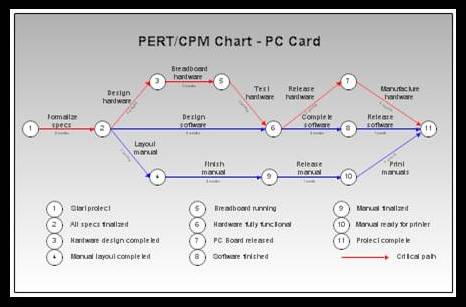Critical Path in a Complex Project

Identifying the Critical Path in a Complex Project
Critical Path in a Complex Project -Understanding
Critical Path Management (CPM) is an effective and almost an indispensable project management tool for any organization. The Project Management Body of Knowledge, the PMBOK, defines critical path as “the sequence of schedule activities that determines the duration of the project.” That means, if any activity / task of the project in that sequence is delayed by a day or two, there is genuine possibility of that much delay in the project completion date itself.
One cannot effectively control the timekeeping of the project without being aware of its critical path. Only way to accelerate the timeline and get back on schedule in case of delay therefore is early awareness and effective implementation on field.
It’s obvious that critical path estimates the end date of the project and reduces the manager’s labor in its infield implementation. If all the tasks are carried out according to the plan of CPM, the project is completed on time. Correct identification of the critical path therefore saves the organization’s expenses, human labor and after sales complications.
‘Slack time’ or ‘float time’ also are the terms often used in the project’s CPM. Some activities of the project sometimes don’t need to rush through. They are slack and are out of the critical path. Similar is the case with float time. It is the flexible time of a task the delay of which doesn’t affect the end date of the project. It is also out of the critical path since its start as well as the end date is flexible.
There are two major types of activities involving a project. Some tasks or activities belong to the category of slack or float which are out of the critical path as mentioned earlier. On the contrary, project sometimes is entirely dependent on activities, which need strict punctuality.
Delay in their completion, individually or collectively, may hamper the progress of the ongoing work and perhaps delay the project. Therefore, these activities are to be focused more and implemented seriously, even accelerated for timely completion of the project. These tasks are actually used to calculate the project’s duration and, hence are called the critical path objects.
Identifying the Critical Path
It is certain that every project has a critical path. The project manager therefore should know it well in advance so as to monitor the project’s progression towards its goal. All the activities lying in its path have to start and end as scheduled in the CPM chart.
Determining the activities of the project that are time bound is therefore badly needed. It is easier if the project manager draws all the activities in a sequential chain; number them one by one, and assign the start and end date to each activity on the chart as per the project schedule. The following example of the production of a new computer brand may give us better idea of the technique.
 The above CPM diagram figure out the release of a new brand of computer. It is a multitasked project involving various hardware and software tasks/activities marked in numbered circles and linked to each other in a network by lines. The CPM chart here gives us clearer idea of all those elements in the critical path and its significance in the project implementation.
The above CPM diagram figure out the release of a new brand of computer. It is a multitasked project involving various hardware and software tasks/activities marked in numbered circles and linked to each other in a network by lines. The CPM chart here gives us clearer idea of all those elements in the critical path and its significance in the project implementation.
The project under review involves eleven activities in a sequence from (1) to (11) human chain. The activities such as (2) Specs, (3) Hardware Design, (5) Broadband implementation, (6) Hardware testing, (7) Manufacture of PC Board and other hardware are vital to produce the new brand of computer. The delay in the completion of any of these activities delays the release date of the brand and thus affects the end date (11) of the project badly. The line marked in red, which joins all these activities together, is the critical path of the project.
The activities linked with blue line, as (4), (9) and (10) are all associated with the ‘Manual Layout’ of the Computer brand and are performed separately. The project is not entirely dependent on these activities timeline. Even if, one or two of these tasks are delayed the project would still can be completed on time (if the timeline associated with the critical path activities are strictly adhered to). These activities therefore are slack or float. But there is no float or slack of any kind on any activity of the red marked critical path. Therefore, to shorten the schedule of the project, all the activities on the red line have to be accelerated.
